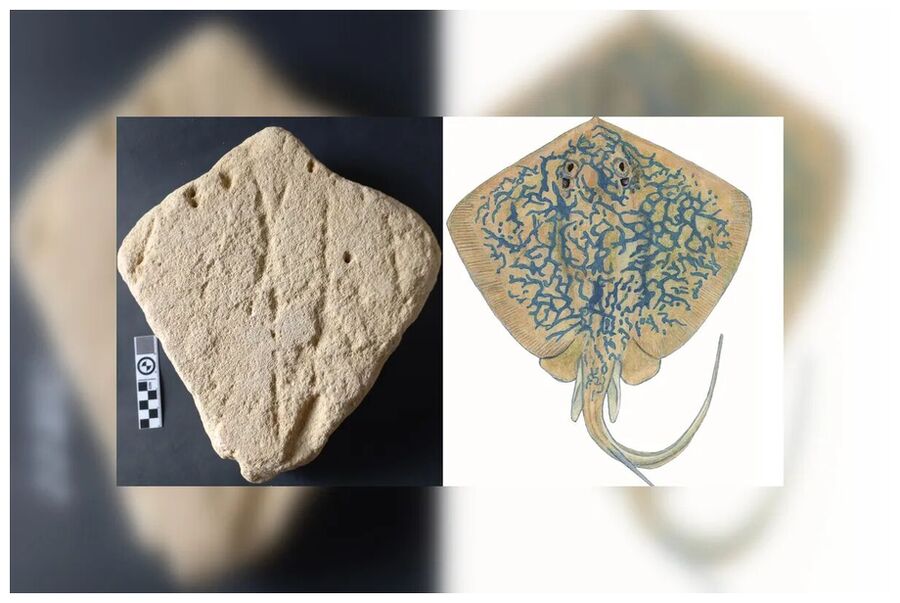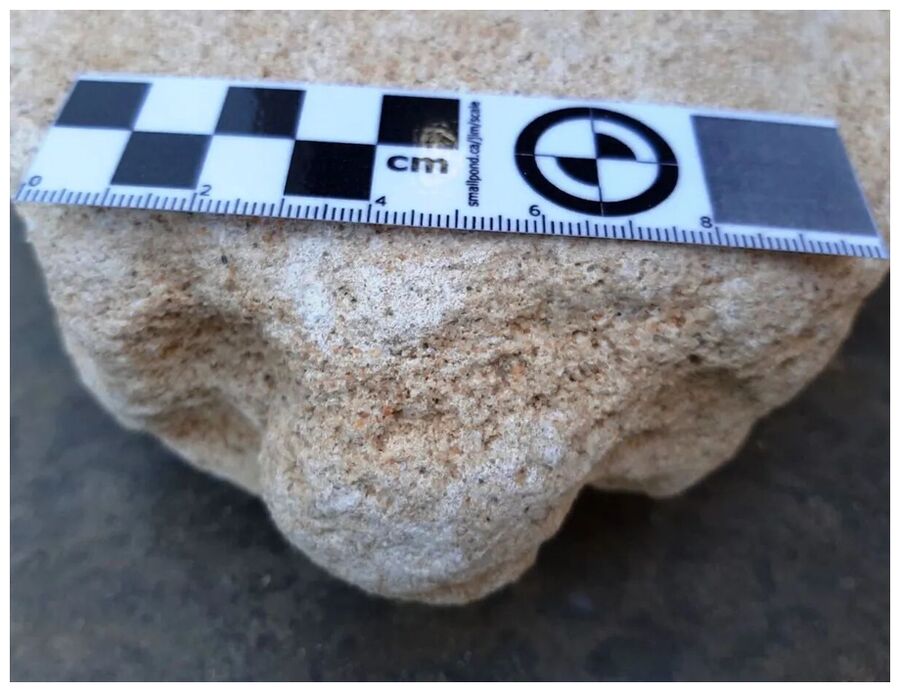This is 90,000 years before cave paintings started to emerge in Europe.

© Image courtesy of Jan De Vynck (left) and Paul Cowley and Alan Whitfield (right)Spot the difference: the stingray "sculpture" with measuring bar (10cm) for scale and an illustration of a blue stingray.
It was discovered in 2018 along the cliffs near Still Bay, about 330 kilometers (205 miles) east of Cape Town on South Africa's coast. Along with its remarkable symmetry, some noticed the rock's shape had an uncanny similarity to the shape of a stingray, albeit with its tail snapped off.
In a new study, researchers at Nelson Mandela University investigated this idea and concluded that the object was created as a sand sculpture to depict a blue stingray (Dasyatis chrysonata). The team overlaid images of a blue stingray, a native of Africa's southern coast, with the rocky object and highlighted how they closely match in size and proportions.
To create the object, they contend that a prehistoric human may have come across a stingray along the water's shore and traced around it, a bit like a child making a sandcastle.
"This is the first and thus far the only example that suggests tracing from this time period. The chances of something like this being preserved and amenable to our interpretation are remote, so it is possible that this may be the only example ever identified, but we can always hope that more will become apparent," Charles Helm, lead study author and Research Associate from the African Centre for Coastal Palaeoscience at Nelson Mandela University, told IFLScience.

© Image courtesy of Jan De VynckThe base of the sandy object, which the researchers speculate was a tail that has since been snapped off.
"First might be the ease of tracing a rather flattish creature. Second might be its value as a food source. Third might be that it was indeed potentially lethal for people used to wandering along the beach and in estuaries, so it might have commanded fear and respect," explained Helm.
To date the object, the researchers used a technique known as optically stimulated luminescence. This technique shows how long ago a grain of sand was exposed to sunlight, thereby showing how long that section of sediment has been buried. It suggested the object was most likely created during the Middle Stone Age around 130,000 years ago.
Given the age of the ray-shaped object, it's fairly bold to claim it was a crafted sculpture. This was long before art of this kind had arrived on the scene and some 90,000 years prior to the emergence of representational cave art in Eurasia.
The oldest uncontested example of figurative art - that is, an artwork that retains strong references to the real world - is a 45,000-year-old cave painting of a pig on the Indonesian island of Sulawesi. Before the explosion of cave art from around 40,000 years onwards, artwork was limited to abstract shapes or patterns.
While the researchers are cautious about their conclusions, the argument is not totally out of step with art's development in the Paleolithic. The study argues that sand tracing might have served as a possible "stepping stone" between abstract images and images of creatures. Indeed, archaeologists have previously put forward a similar theory about how hand stencil artworks might have served as a similar transition from abstract shapes to representational forms.
The evolution of artwork is crucial for understanding the story of humans. By looking at the development of visual culture, we can gain some important insights into what ancient human cultures perceived to be important and how their world became increasingly complex. The suggestion of a 130,000-year-old animal sculpture may initially seem slightly anachronistic, but human history is full of strange outliers that challenge our presumptions.
The new study is published in the journal Rock Art Research.
Source link

